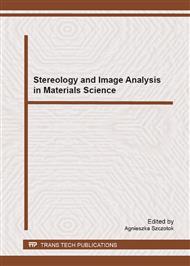p.19
p.25
p.33
p.41
p.47
p.53
p.58
p.64
p.70
Changes in Microstructure of GX12CrMoVNbn9-1 Cast Steel after Low Cycle Fatigue
Abstract:
The paper presents the influence of low cycle fatigue (LCF) on the changes in microstructure of GX12CrMoVNbN9-1 cast steel after the 1040°C/12h/oil + 760°C/12h/air + 750°C/8h/furnace heat treatment. The examined cast steel was subjected to LCF at room temperature and at 550°C under the conditions of controlled total strain. It was observed that fatigue life of the cast steel decreased with increasing temperature. Cyclic softening was noticed at all temperatures. TEM quantitative characterization of the microstructure after LCF was carried out using: mean diameter of subgrains, density of dislocation and mean diameter of M23C6 carbides. For the mean diameters of subgrains and M23C6 carbides parameters, the histograms were made using STATISTICA 9 software. The research of quantitative parameters of the microstructure was carried out using AnaliSIS programs. Performed research of the quantitative parameters of microstructure has shown that the decrease in fatigue life with the temperature rise and cyclic softening of the cast steel after LCF are related to an increase in the lath width, the change from lath structure to cell/equaixed substructure, a decrease in dislocation density by the recovery process and a growth of M23C6 carbides.
Info:
Periodical:
Pages:
47-52
Citation:
Online since:
February 2013
Authors:
Keywords:
Price:
Сopyright:
© 2013 Trans Tech Publications Ltd. All Rights Reserved
Share:
Citation:


